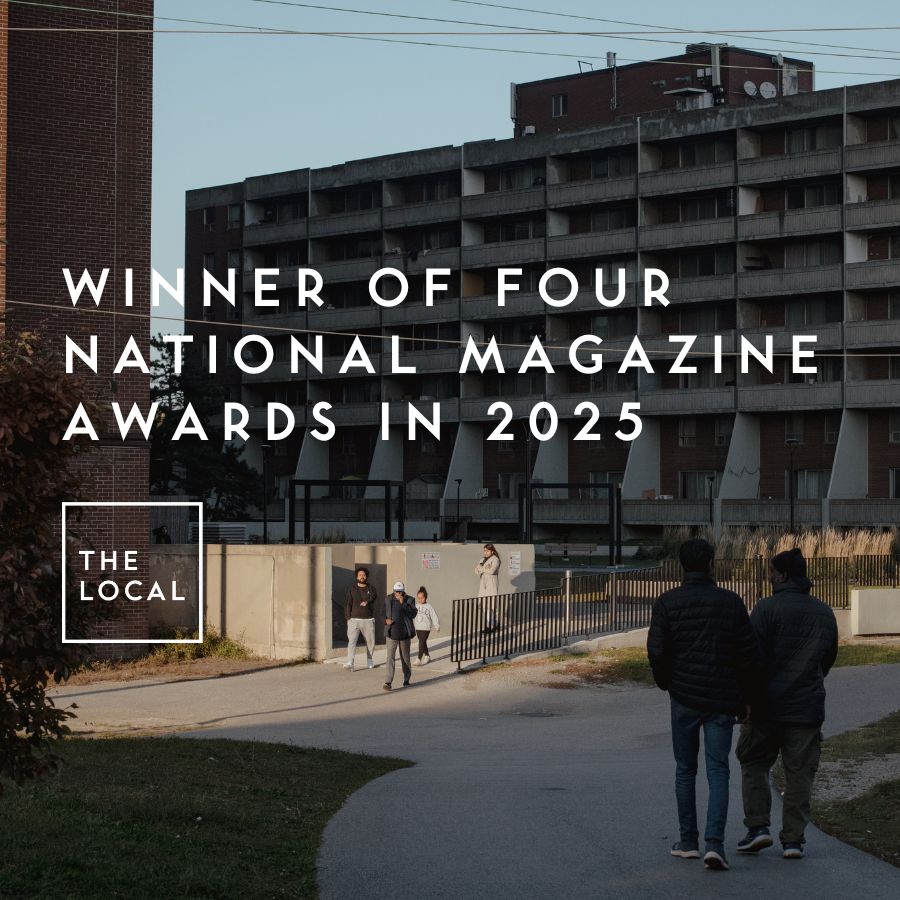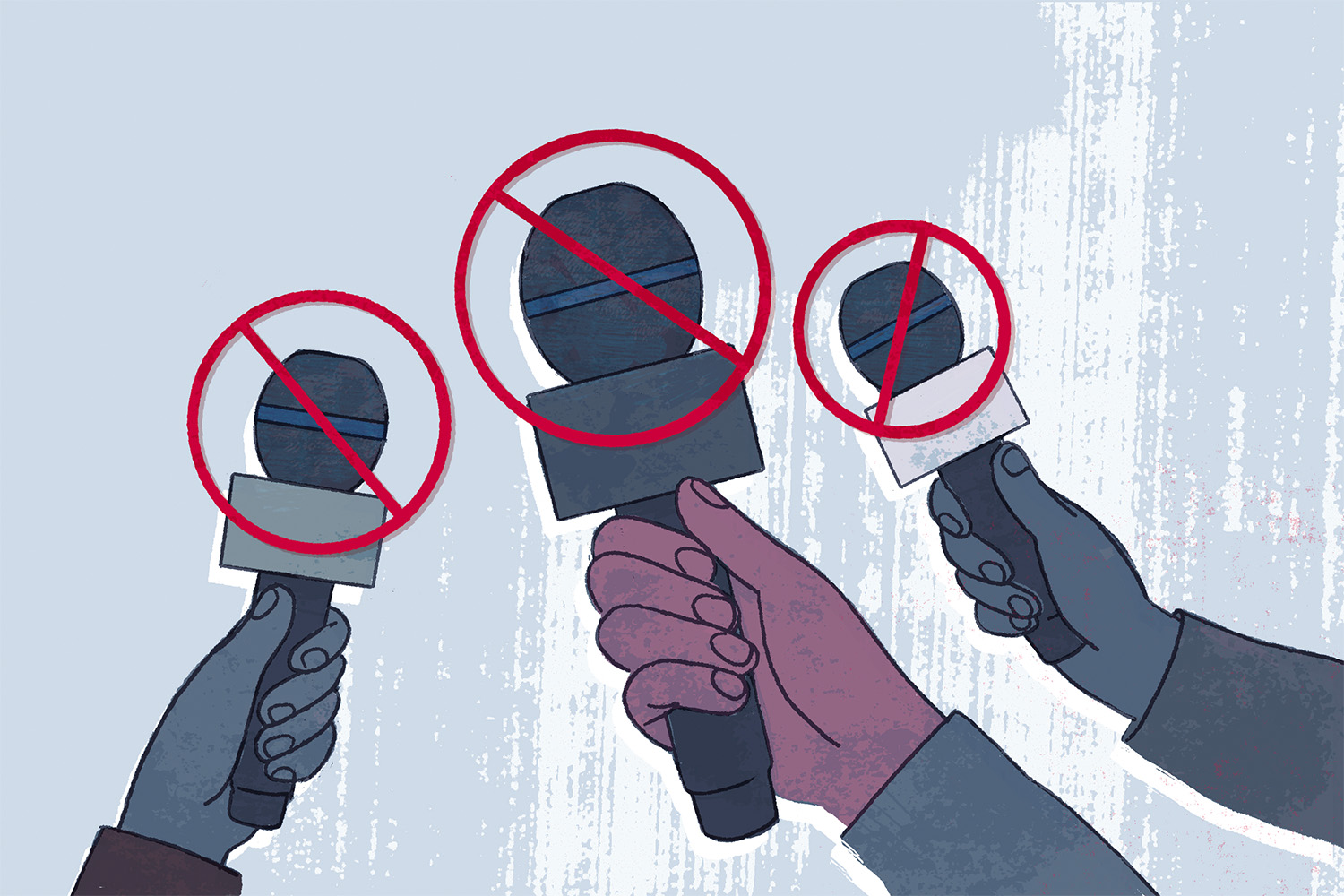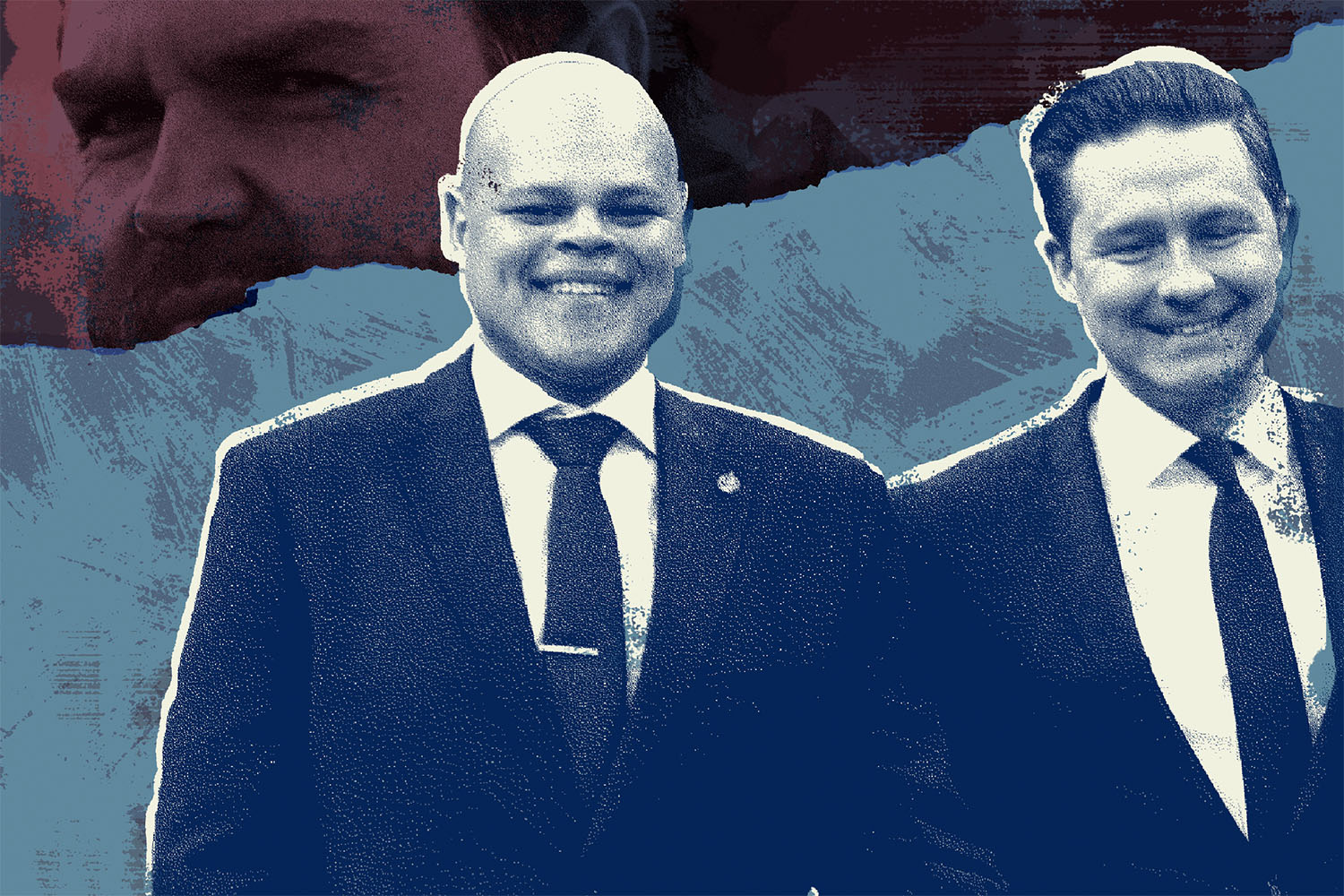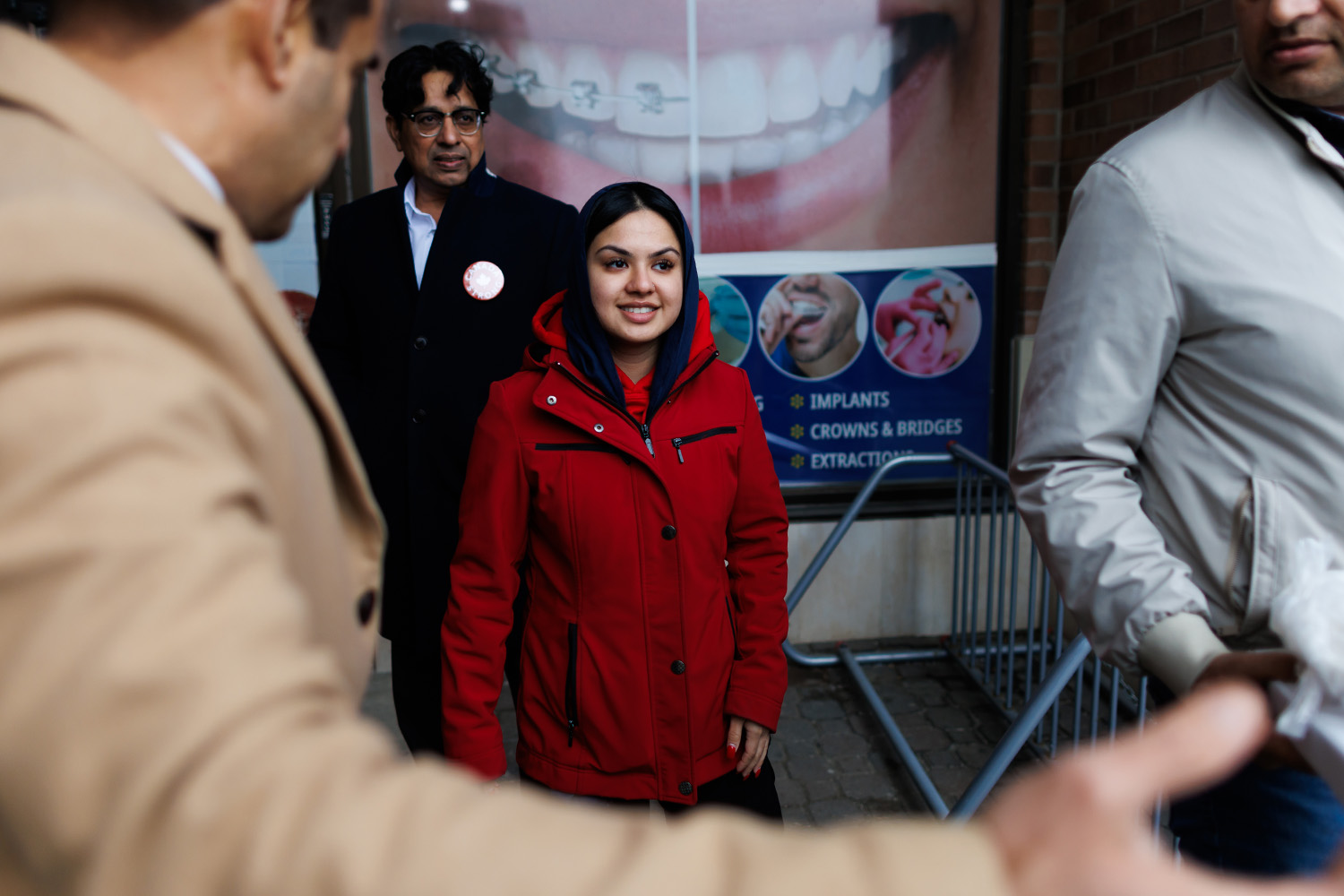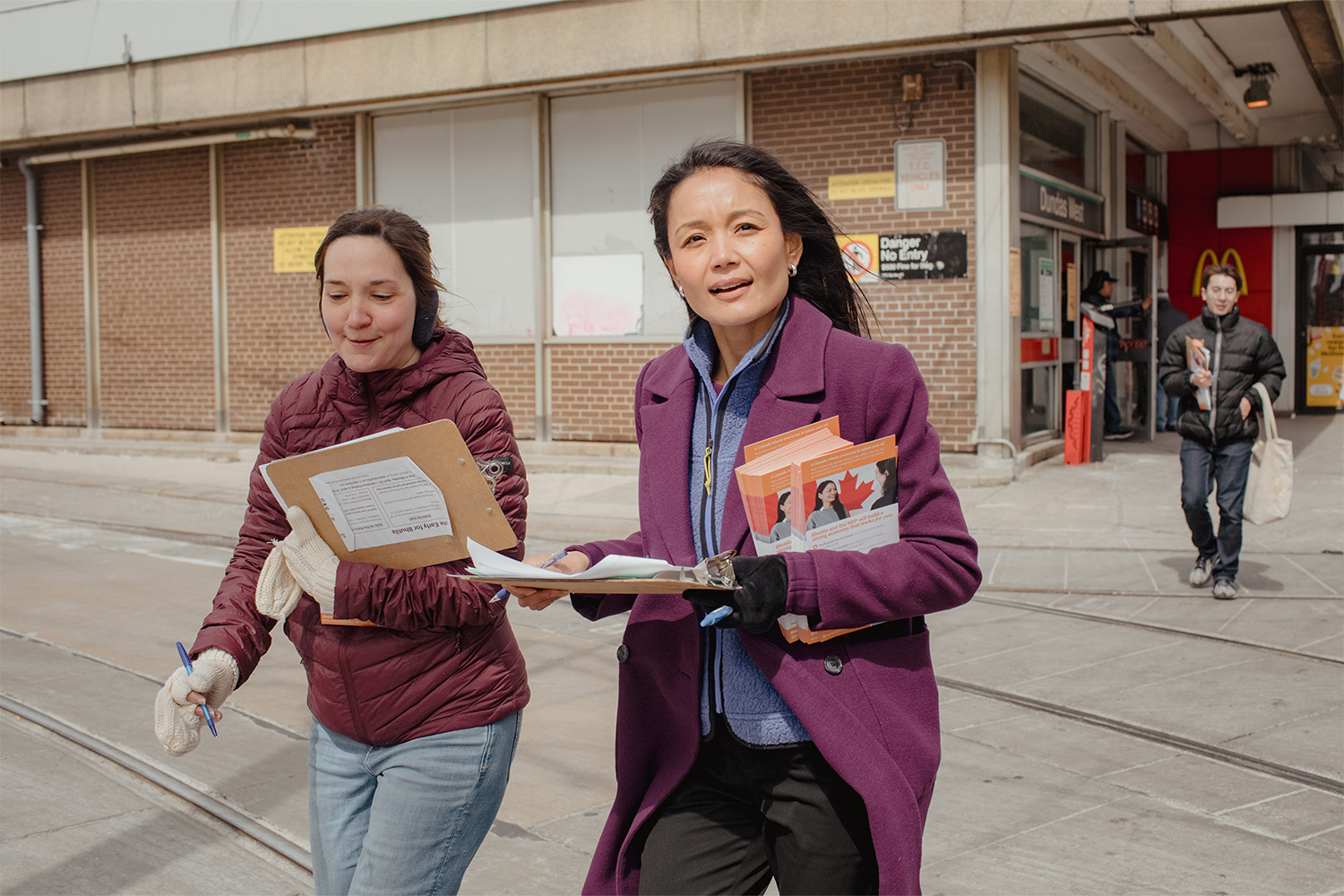
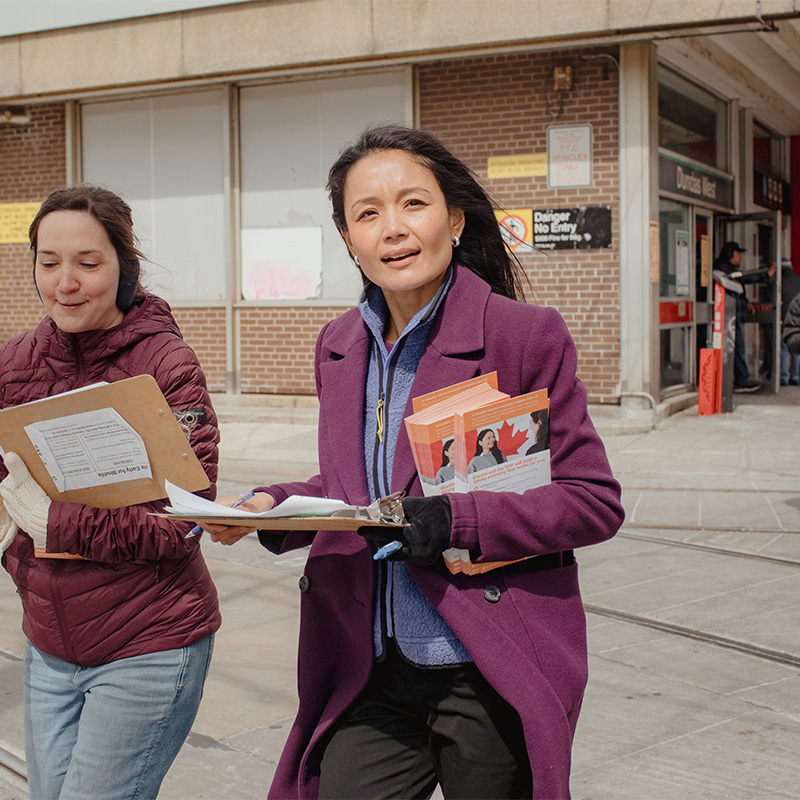
Before knocking, Bhutila Karpoche places four careful fingers on the door of an affordable condo unit in the Junction. As the NDP candidate for the recently redrawn Taiaiako’n–Parkdale–High Park, she has a pitch about herself prepared for the voter who answers. But that’s not how she starts the conversation.
“Have you given the election any thought so far?” she asks each resident who comes to the door. It’s a simple question, almost funny against the backdrop of a highly anticipated, polarizing, national race advancing at breakneck speed. The woman at the door seems uncertain, but mentions she’s thinking about what would be best for seniors like herself.
“Did you receive a dental card?” Karpoche asks, testing a hypothesis. The voter nods, saying she’s happy with the new program, especially as the cost of living has gone up. “And you know how the dental card was made possible, right?” Karpoche adds, smiling, knowing she’s found her in.
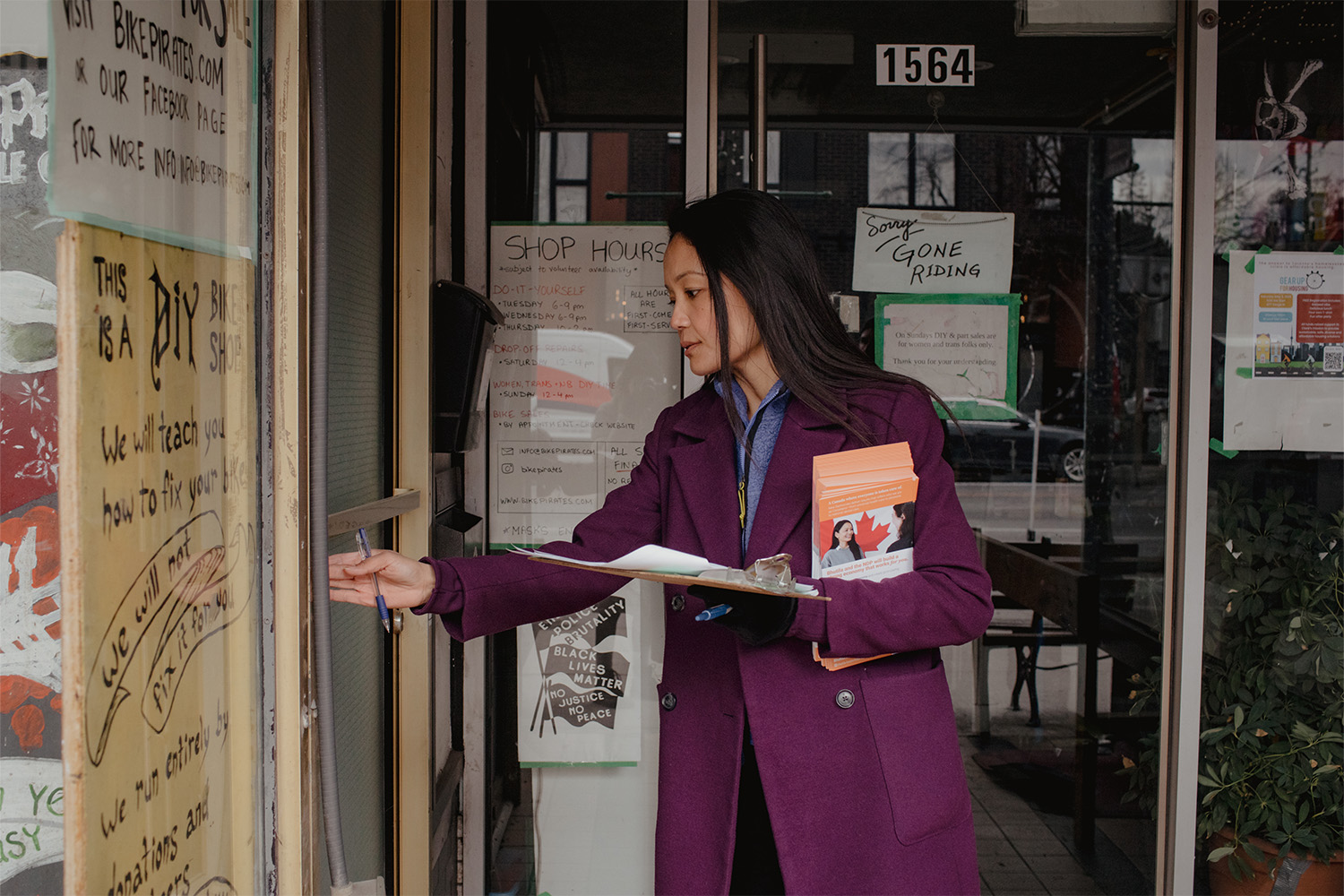
As a two-term former MPP for the riding she’s now seeking to represent in Ottawa, Karpoche might have a local leg up in a national showdown between Liberals and Conservatives. An epidemiologist and former community organizer homegrown in Parkdale’s Little Tibet, Karpoche swept the west-end constituency with more than 50 percent of the vote in the 2018 and 2022 provincial elections. She made headlines as the first Tibetan ever elected to public office in North America and was voted Toronto’s Best MPP by NOW Magazine readers for three consecutive years. A star candidate in an otherwise dismal election cycle for the NDP, Karpoche hopes to remind voters why the party is an underdog worth rooting for.
“The NDP at the federal level has never formed a government,” she says. “But when you think about all the major Canadian programs and policies that exist—we have our prints all over it.” Karpoche points to dental and pharmacare programs, voted down by other parties until the NDP applied pressure through their supply and confidence agreement with the Liberals.
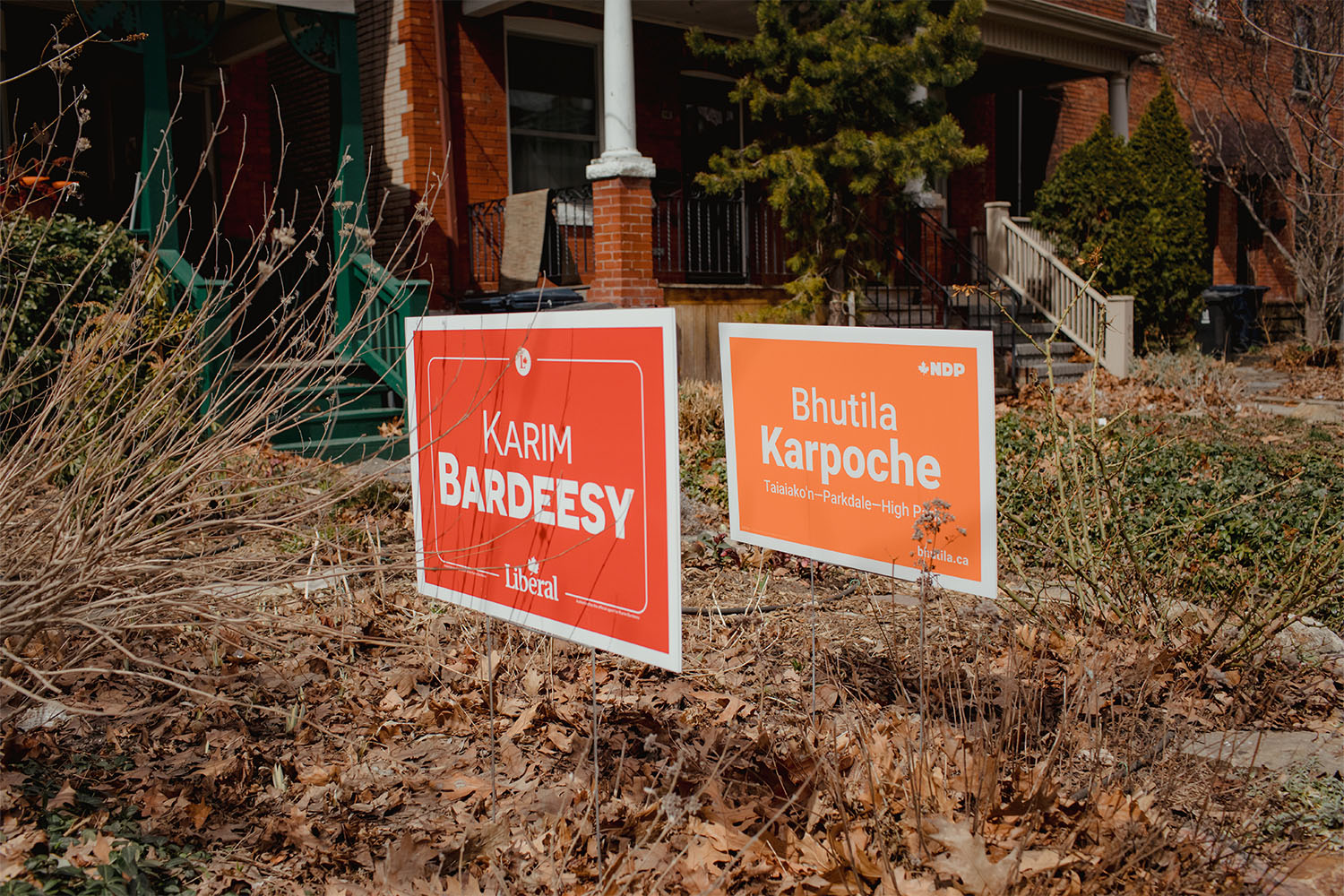
Amidst a massive Liberal surge, where polls suggest half of 2021 NDP voters could switch sides and projections suggest the party could lose official status, those policy wins are unlikely to translate to national electoral gains for the New Democrats. Instead, their best chances lie in ridings like Taiaiako’n–Parkdale–High Park.
Stretching from the Humber River to the West Toronto Railpath, the area is home to a wide range of constituents: tenants, wealthy homeowners, climate activists, families with small children, immigrants fleeing persecution, and young people drifting from the downtown core. The riding has long flip-flopped between red and orange, but almost never blue. If the NDP is to win back a seat in Toronto—the first since 2015, when the party lost eight seats to the Trudeau Liberals—it might be here.
At Karim Bardeesy’s Liberal campaign kick-off on a Sunday afternoon near the end of March, it’s all about the fight. That combative energy is crinkling in the plastic Canadian flags covering the walls, cooked into the pancakes served with a four-litre jug of maple syrup, and spilling out onto the sidewalk when there’s no more room left inside.
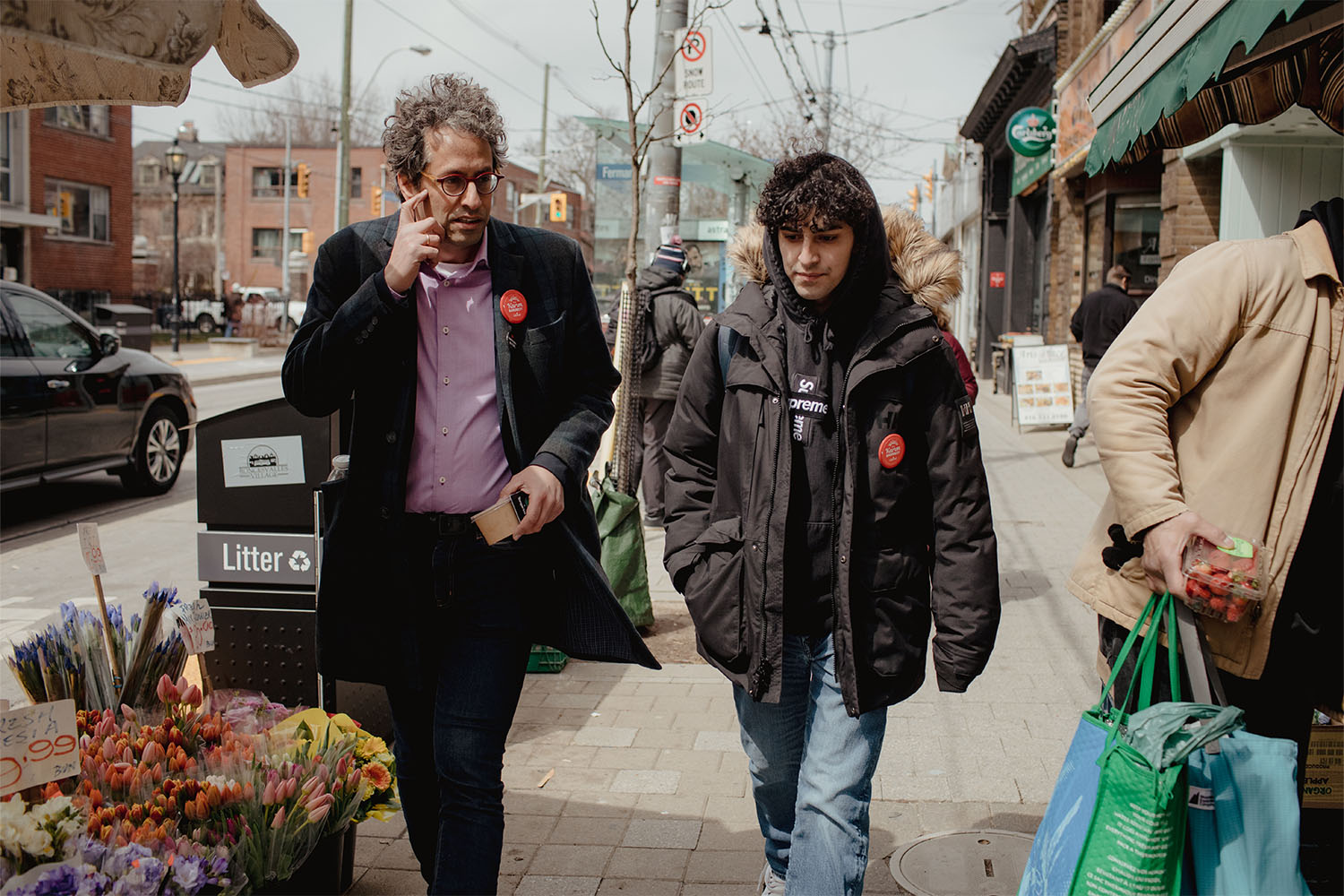
There’s a sense of urgency from the party that has clawed its way back from rock-bottom levels of public support to a historic polling upswing, with an 87 percent chance of a majority, according to CBC’s Poll Tracker. “Never, ever, ever count out the Liberal Party of Canada,” shouts surprise guest Chrystia Freeland when she takes the stage, emphasizing each word for those listening outside. As different speakers address the crowd, plenty of barbs are directed at Trump and Poilievre, despite the fact that Conservatives haven’t held a seat in the area since 1984. (The Conservative candidate, Wladyslaw Lizon, couldn’t be reached for this article.) The more pressing threat to keeping the riding red is alluded to at the launch party, but not spelled out.
“Take nothing for granted in a riding like this,” warns Arif Virani, the outgoing MP, who unseated the 2015 NDP incumbent by a little over 1,000 votes. He was re-elected on a similarly slim margin in the last election. Karpoche’s name is never spoken, but her presence is unavoidable. “There’s a machine out there, and she is supported by people at the city council level, people at the school trustee level.”
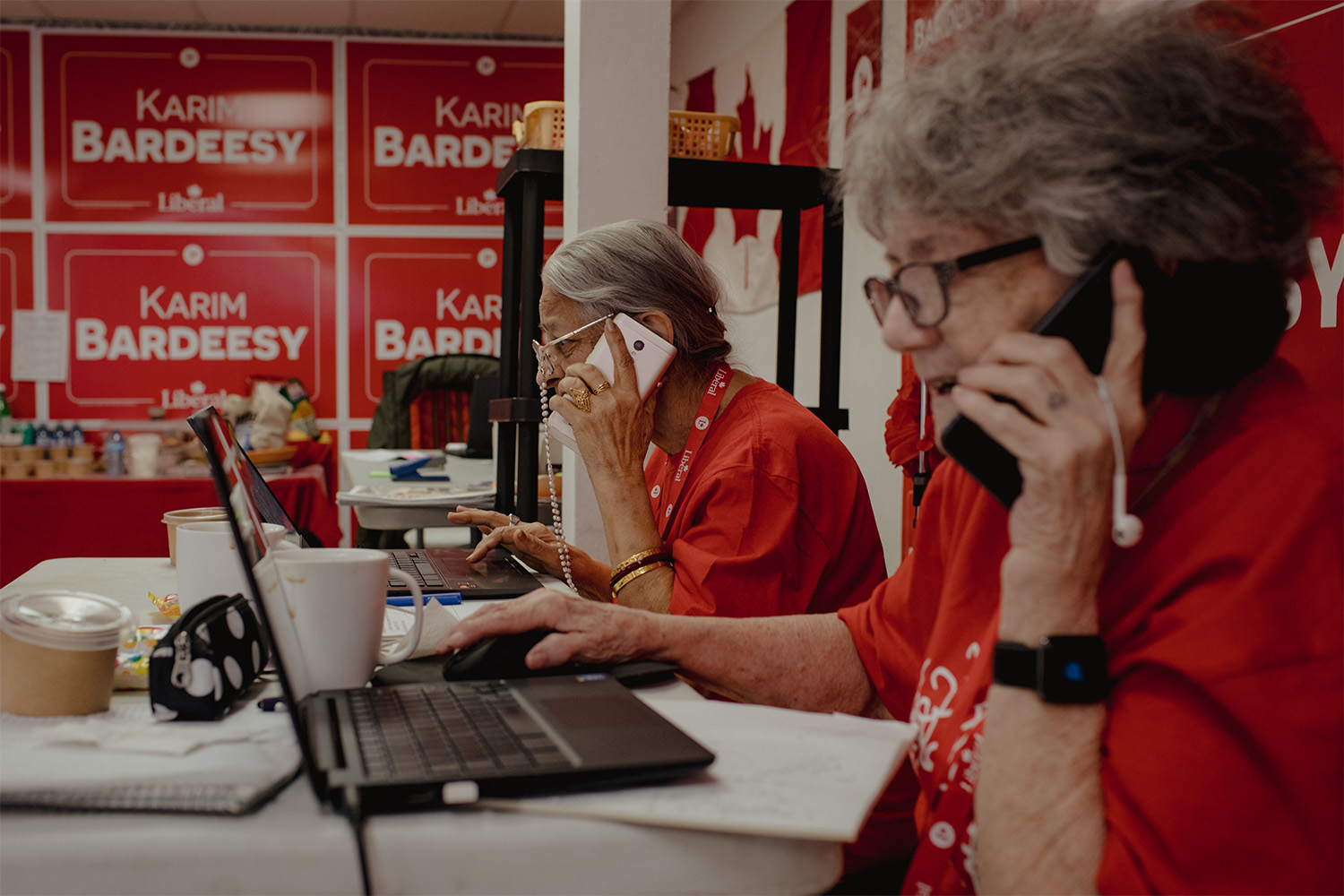
If this race evokes a sense of déjà vu for Bardeesy, he doesn’t show it. Bardeesy is on leave as the executive director of the Dais, a public policy think tank at Toronto Metropolitan University. He has also served as deputy principal secretary to former premier Kathleen Wynne, and executive director of policy under both Wynne and her predecessor, Dalton McGuinty. He and Karpoche previously faced off for provincial office in 2022, where he came in second.
More than the idea of a rematch, however, he’s concerned with trying to reach 89,802 voters in just over a month. Armed with a stack of flyers and a Canadian flag lapel pin, Bardeesy works 14-hour days, sprinting between doors to maximize the time he can spend talking to residents. “They know this is a choice between a Liberal government and a Conservative government,” Bardeesy says about the conversations he’s having with voters.
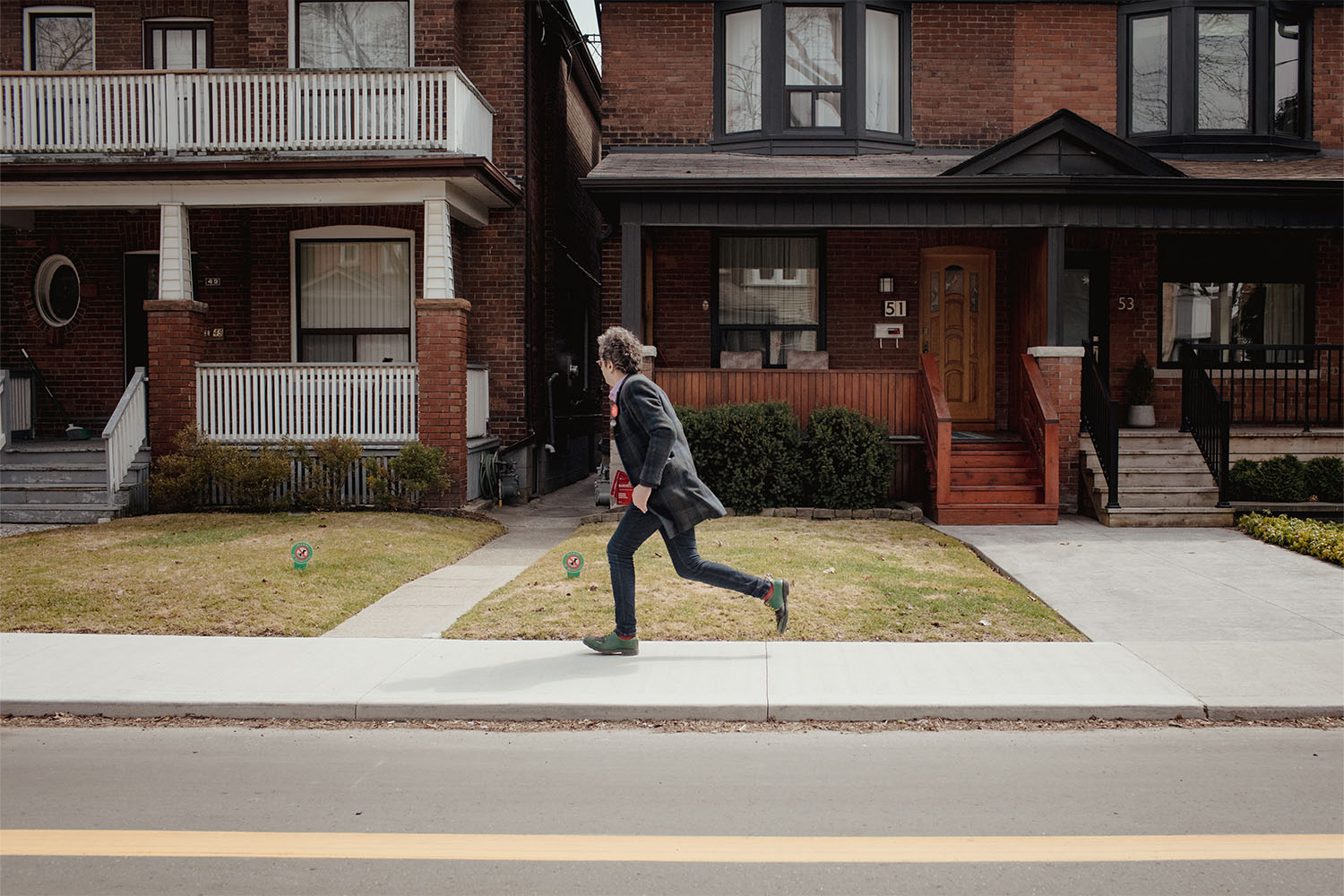
On a larger scale, he’s campaigning on party promises of a strong economy, social safety net, and response to tariffs. On a local level, Bardeesy wants to tackle issues around affordable housing, a particular area of concern for the constituency. “We’ve just announced a really significant housing plan,” Bardeesy explains, referring to the Liberal proposal to double the pace of residential construction in Canada for the next decade while creating jobs. “It includes getting the public sector and government back into the business of building housing.” The plan imagines a new federal agency that would act as a developer of affordable housing at scale, including on government land.
At the centre of any discussion about housing within the riding is the majority tenant neighbourhood of Parkdale. Situated in the eastern end of the electoral district, the community has long been a landing pad for refugees and immigrants, and a hub of affordable units and rooming houses. There, the Parkdale Activity-Recreation Centre has supported people facing issues with housing, substance use, employment, food insecurity and mental health, for nearly five decades.
Federal Election 2025
For in-depth election coverage from across the GTA, sign up for our free newsletter
"*" indicates required fields
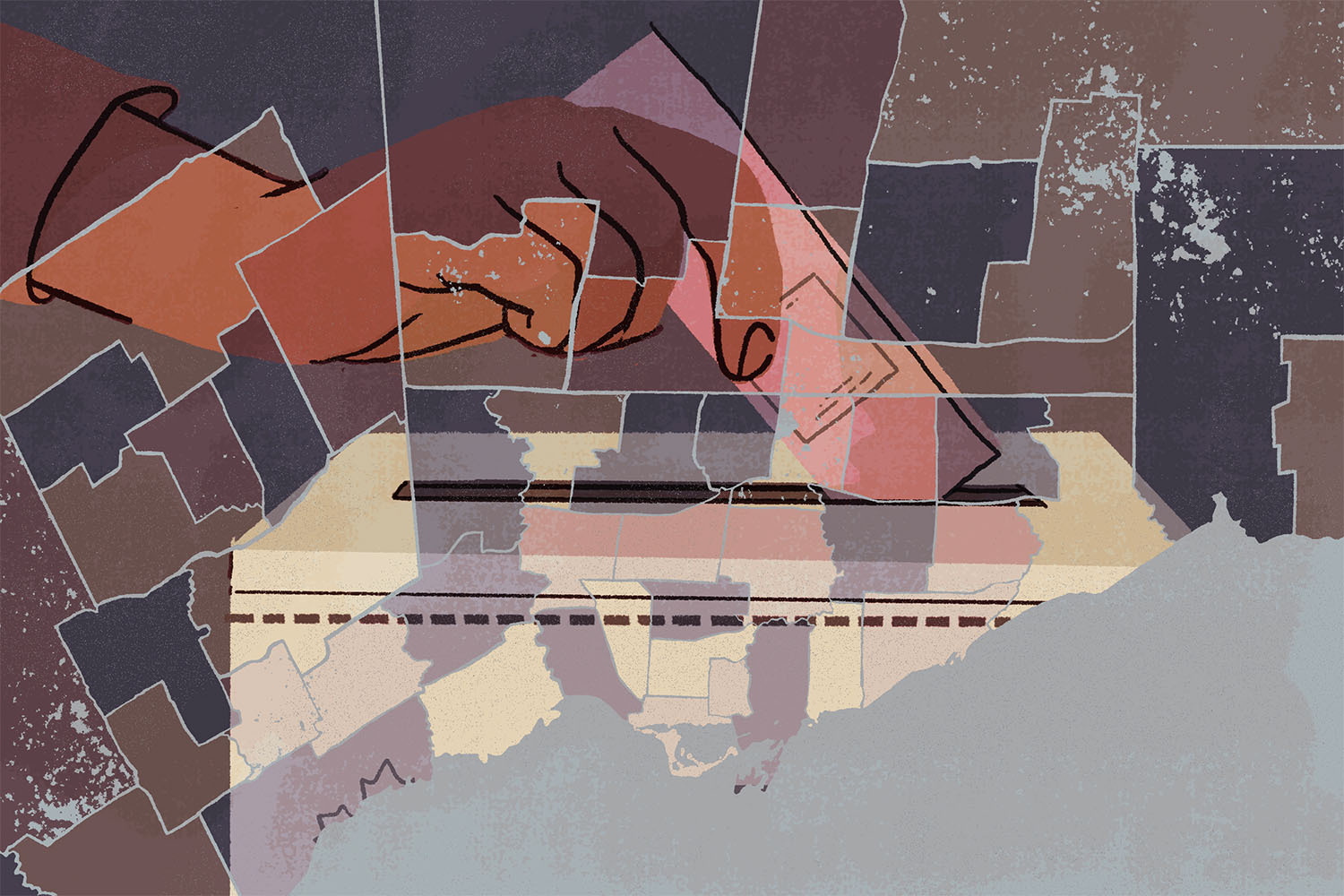
“Much of what used to be affordable housing in this neighbourhood is no longer affordable,” says Victor Willis, the organization’s executive director of 26 years. Vegan bakeries and trendy vintage shops now boast colourful storefronts not far from community health services and local produce vendors selling apples and tomatoes. Many rooming houses in the area have been “upscaled” to market-rent apartments or converted to single-family homes, while international real estate investment firms buy up apartment towers by the dozens. “There’s been no real guidance federally to limit ownership and the raising of rent,” Willis says.
Similar to the Liberal housing plan, the NDP is promising to accelerate residential construction to build three million homes by 2030 and train 100,000 skilled workers in the process. It’s also pledging to build housing on crown land, but with a focus on rent-controlled units in particular. The party’s platform proposes stronger rent protections to prevent renovictions and price gouging.
Willis would like to see a housing strategy that reduces precarity in neighbourhoods like Parkdale and improves the kind of social cohesion that makes the community special. He describes the riding as an engaged place to live—a mixed community where people across the class spectrum bump into each other and chat on the street, at the park, or at the greengrocer.
“I think that can tell us things about how we aspire Canada can be,” Willis says. In an election where heightened tensions with the U.S. are taking centre-stage, however, he suspects people are searching for an immediate sense of safety, rather than pushing for more aspirational goals. “When people get anxious, they tend not to dream as high.”
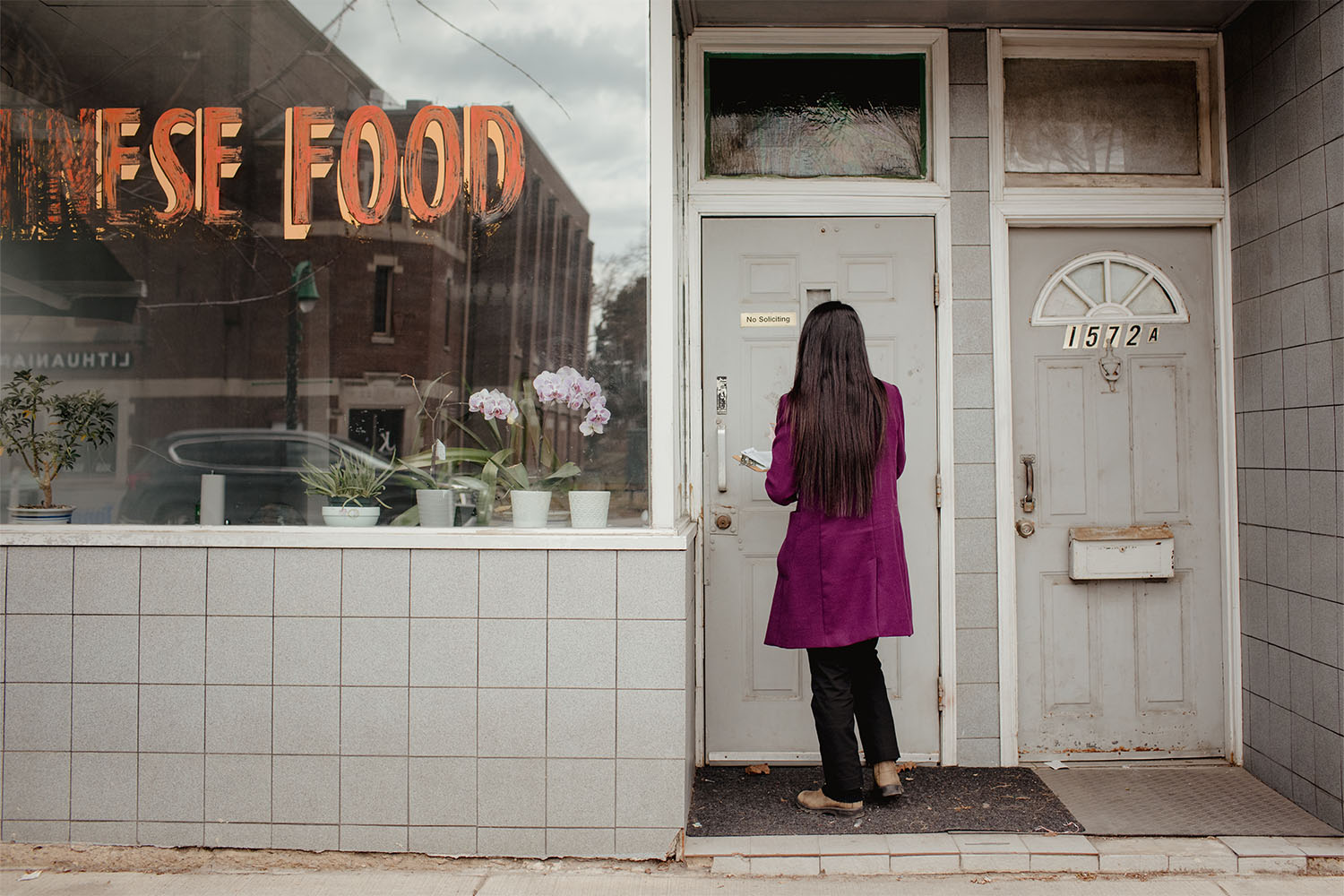
Not every door is a win for Karpoche, and more often than not, that challenge is rooted in a lack of faith. Strategic voting is the perennial thorn in the side of the New Democrats, but in this election in particular, it’s hard for voters to believe that the multi-party system will function as it’s supposed to. Data from the Angus Reid Institute suggests newfound Liberal support is largely at the expense of the NDP, with more than a third of “Liberal switchers” coming from the orange camp.
“We usually lean NDP,” a voter in the Junction tells Karpoche at the door. But this time, she and her husband would like to see Mark Carney leading the country due to the current economic climate. “This is a little bit of an unprecedented time and we’re cognisant of our vote being split.”
Quiet and confident, Karpoche explains that in this riding, Conservatives have come a distant third in almost every election. “We are able to vote for who we believe will be a strong voice for our community in Parliament,” she says. Karpoche appeals to the couple on account of her track record as MPP, her collaboration skills as a former member of the opposition, the kinds of social policy proposed by the NDP, and the need to constructively hold the government to account. “It’s not enough to just stop somebody like Poilievre,” she concludes. “We don’t want to be stuck in the status quo—how are we actually moving forward?”
The pair listen intently, but it’s not clear whether she changed their minds. “This is a difficult, confusing time for us,” the woman says, before thanking Karpoche for her time and wishing her luck.
Karpoche moves on, unfazed by the magnitude of the problem facing her and her party. In fact, the task at hand is partly why she wanted to make the jump to the federal level. “I have always been the kind of person that when there’s a challenge, I want to be part of it,” she says.
Karpoche knocks on the next door, introducing herself and looking down at her list of voters. “Have you given the election any thought so far?”
The Local’s Federal Election 2025 coverage is supported in part by our readers and by the Covering Canada: Election 2025 Fund.
